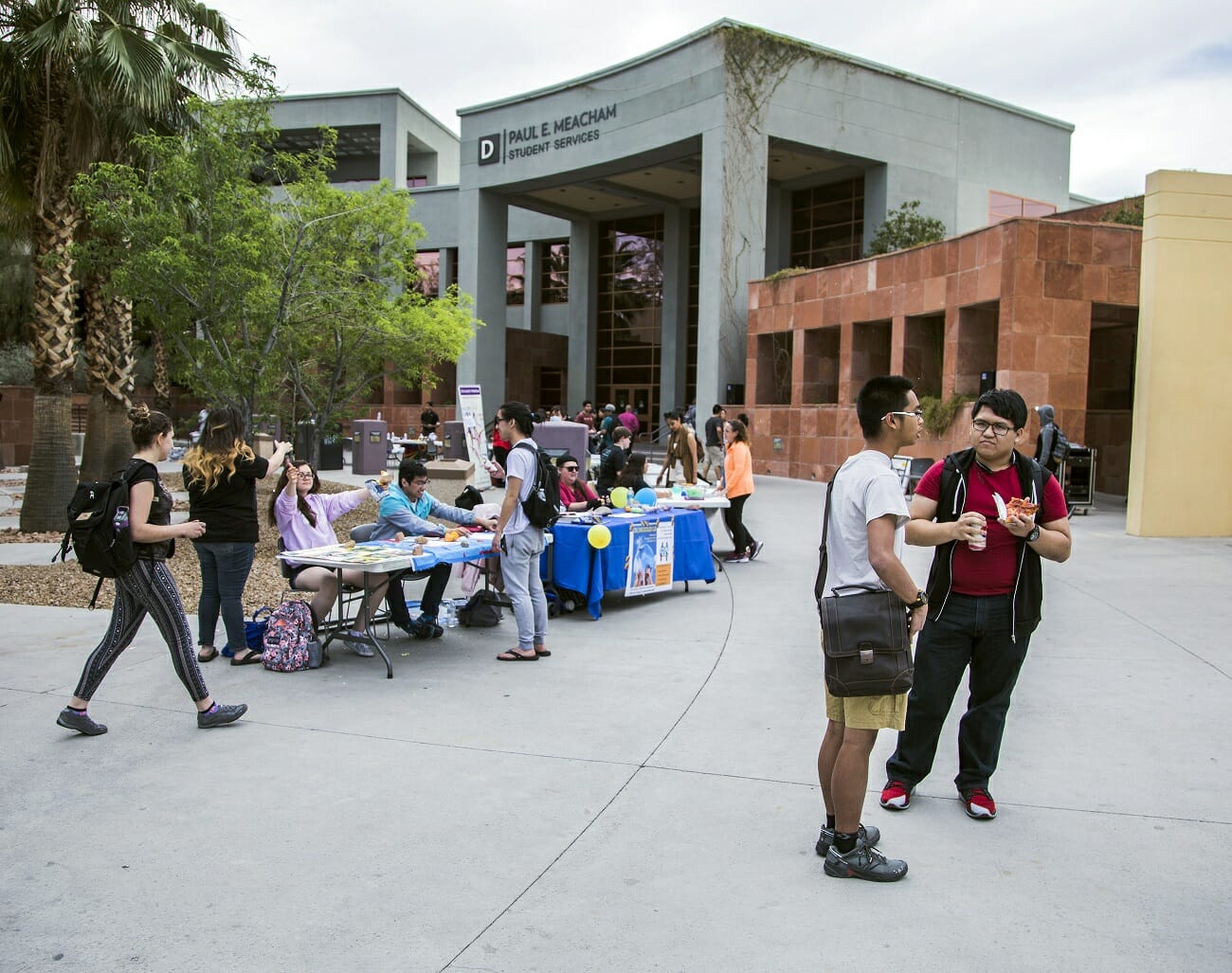Is it time for Nevada’s community colleges to leave the nest?

I often joke that I took the scenic route through the College of Southern Nevada (CSN). Like most students, I worked full time and went to school when I could. It took 11 years from the start of my very first class to when I finally completed my Associate of Arts degree (including when I was “just taking a year off,” which ended up being five). One of those years, I even had the honor to serve as student body president, but that is a story for another day. My part-time status was the norm. In the fall of 2018, 71.4 percent of CSN students were considered part-time. In the same period at UNLV, 74.2 percent of students were considered full-time. It is very safe to say that the populations of these two institutions, while having some overlap, are not much alike.
When the first Nevada community college opened in Elko in 1967 (now Great Basin College), the University of Nevada became the University and Community College System of Nevada (UCCSN) and from there grew into the Nevada System of Higher Education (NSHE) with its eight institutions, four of which are community colleges. But how has that relationship served the state’s community colleges over the past 54 years?
I’ll begin with a quote from Russian author Leo Tolstoy, who opens his novel Anna Karenina with the line “Happy families are all alike; every unhappy family is unhappy in its own way.” For all intents and purposes, Nevada’s higher education system has been a pretty happy family but, like any family, there have been challenges — unique and otherwise.
For example, shaping articulation agreements within NSHE had been difficult, and some students were unable to transfer from community college to a four-year university without having to retake classes the universities didn’t accept. This took a lot of work and a lot of heartburn to fix. The universities were concerned about the quality of instruction in similar courses; the issue was eventually overcome. But coupled with the sometimes rocky transitions from K-12 to community college to university, we ended up with a pretty low graduation rate. (In 2019 The Nevada Independent’s Michelle Rindels wrote about CSN’s goal to increase its graduation rate to 17 percent from 7 percent, and Truckee Meadows Community College’s aim to raise its graduation rate to 33 percent from 30 percent.)
Of course, there is always more to graduation rates and transfer out rates than the obvious. But has the struggle for community college retention and graduation been eclipsed by the problems of their older siblings (UNR and UNLV)? I think it has. I have had the pleasure of working with NSHE system staff and regents on several initiatives, task forces and lobbying efforts at the Legislature, and I love all the passion and commitment. But it does not take Hercule Poirot to see that when NSHE has eight baby birds in the nest wanting to be fed, the larger and louder state universities get the most love (I will avoid the issue of the north-south divide — for now).
I do not blame them. I am an alumnus of both CSN and UNLV, and I love them both. But when I would advise high school students on pursuing higher education, if a degree was the goal, I always pushed them to CSN to complete an associate degree and then transfer to UNLV or UNR to, in part so they could save more of their available financial aid money for the more expensive university or state college level courses. The relationship between community colleges and the rest of NSHE works great as a pipeline from community colleges to university, but many students do not want to get a four-year degree.
That is why community colleges are so essential to diversifying the Nevada economy. The need for skilled workers with advanced training, but not necessarily a four-year degree, is real. Community colleges are where that should happen. They can and should fill a need the universities can’t or shouldn’t. But when you pit today’s community colleges — with their low graduation rates and workforce-focused mission — against universities bringing in grant money, prestige, world-renowned speakers and NCAA sports to Nevada, it’s no wonder the community colleges feel they are being told to not wait up while UNR and UNLV go to the party.
I appreciate the great work NSHE has done in trying to address these issues. There is a vice chancellor focused on community colleges. The Board of Regents has a committee dedicated to community college issues. These are admirable efforts. But as community colleges grow and try to fill our skilled workforce void, it may well be time to re-examine their place within NSHE. In part because our state is unusual in that our community colleges exist in a governance system with the four-year institutions. California, Utah and Arizona all have separate systems of governance. Nevada probably cannot do its best in 2021 while operating on a 1967 system.
I would like to note that I am late to the “Nevada System of Community Colleges” camp. When Sen. Ira Hansen (R-Sparks) first proposed the concept a couple sessions ago, I balked. “Stronger together” was the battle cry for maintaining the status quo. If Hansen had printed that on a T-shirt, I probably would have worn it. But because I have worked in a workforce development role for nearly a year now, I have seen another side of the challenges.
I have a deep love for CSN — and all community colleges. I attended CSN during a formative period in my adulthood, and I found the passion of the administration, staff and faculty to be notable. I still consider several of these passionate educators friends to this day. My desire to see the community colleges become their own system is born out of a desire to see these people and our important community institutions grow and flourish.
I am glad there is now a study being considered in the form of AB450, rather than an immediate split as the governor originally proposed. It is time for a serious conversation about the future of Nevada’s community colleges and whether they should take flight to be the best they can be for Nevada’s students, businesses and communities.
Nathaniel Waugh is a member of the Las Vegas-Clark County Library District Board of Trustees and a program supervisor at Hope for Prisoners where he focuses on workforce development for dislocated workers and recently released offenders. He received his Master of Arts in Urban Leadership from UNLV.
